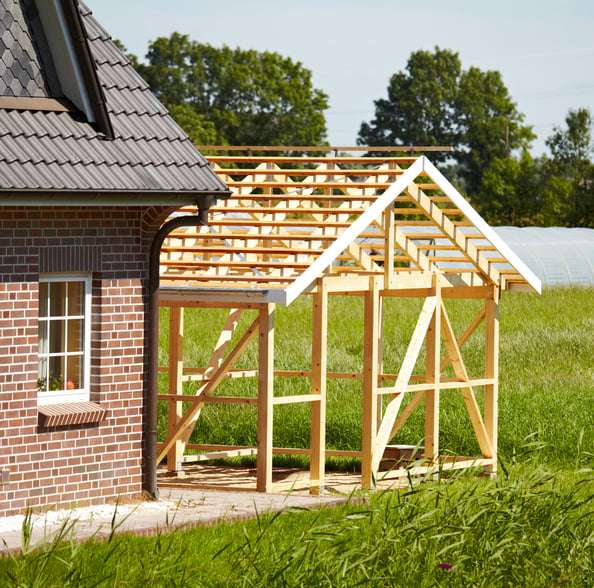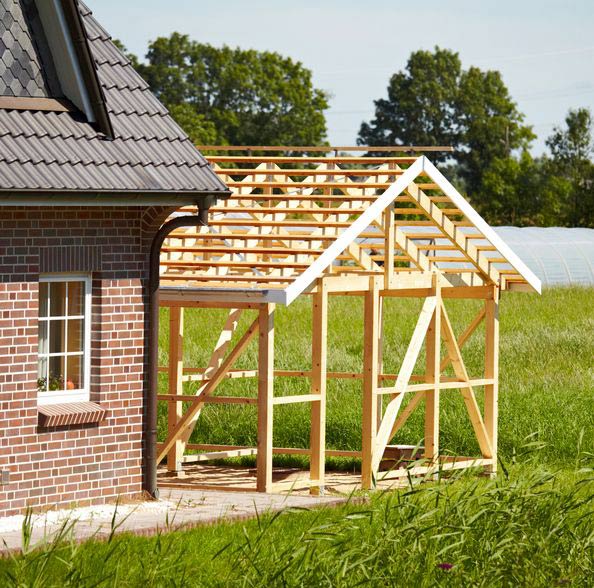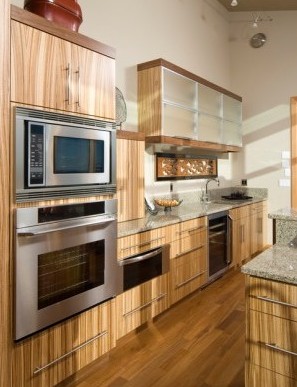Planning to build a potting shed or some custom built-in planters for the patio? Bamboo plywood, with all its many wonderful characteristics, is, unfortunately, not recommended for use for exterior structures unless you live in an area with stable year-round humidity and the panels are treated to stand up to the weather. Even though some bamboo plywood manufacturers describe it as “great to use indoors or out,” the truth is, bamboo is a wood product that hasn’t been chemically treated for outdoor use. If you’re considering bamboo plywood for an outdoor project, make sure you finish it with a product like polyurethane to help it resist deteriorating due to weather. A good outdoor alternative to bamboo plywood is marine-grade plywood, which can withstand moisture and stand up to different weather conditions. However, it lacks the Earth-friendly qualities of bamboo plywood.
But don’t count out bamboo plywood just yet because it happens to be the perfect material for all sorts of indoor projects. Bamboo is one of the fastest-growing plants on the planet. Due to its rapid growth properties, an abundance of the resource nearly world-wide, its dimensional stability, and tensile properties, bamboo makes an ideal material for plywood. It’s a green, eco-friendly choice, has a gorgeous look and character all its own, and is by far stronger than almost every hardwood you can name! (It’s also way more attractive than ordinary plywood!) The only interior project it’s not well-suited to is an interior door.
Cabinetry
Whether you’re talking about kitchen or bathroom cabinetry, bamboo plywood will give your room a distinctive look and durable performance. Check out these simple flat-panel bamboo plywood cabinets and island base!
Counter Tops
Bamboo plywood makes for a unique, super-strong, and stunning kitchen countertop, whether you use it throughout the kitchen or on an island that you’ll use for food prep and casual dining — or both. Just be sure that your final finish is food-safe like mineral oil or a wax product like Minwax Paste Finishing Wax. You’ll love the durability of bamboo countertops, and you’ll get lots of compliments on them too!
Tables
Just as it works great as a countertop material, bamboo plywood makes a great-looking, durable tabletop too! (If you’re really good at wood-working, you might even consider tackling some curvaceous chairs to go with your table!)
Walls
Plywood walls are becoming trendy, and bamboo plywood takes them to a whole new level, as seen in this serene woodland home with bamboo plywood walls. Do an entire room or create a unique accent wall. Bamboo walls impart a clean, fresh, outdoor feeling to a room and add an air of sophistication, which is why they’re often used in commercial applications like hotels and high-end homes.
Tips for Building With Bamboo Plywood
When your bamboo plywood arrives at your home, it’s important to acclimate it to your work area before beginning your project. Afterward, let it acclimate to the room where you’ll be installing it, too. To acclimate your bamboo plywood, open all packaging and let the plywood sit for 5-10 days undisturbed and lying flat on a table or the floor.
As mentioned, bamboo plywood is hard — tough. (Studies have shown that bamboo has a higher compressive strength than concrete and a tensile strength that is close to steel!) For that reason, it’s best to use sharp, fine-toothed saw blades to cut it. Finish nails and a tack hammer are handy tools for working with bamboo plywood since they’re less likely to cause splitting. Another trick to make working with this hard material a breeze is to drill pilot holes for nails or screws.
Staining and Finishing
Before staining your bamboo plywood, experts recommend using a pre-stain conditioner to ensure that your stain goes on evenly and smoothly. Use a high-quality wood stain (oil or polyurethane), and follow up with oil, wax, or clear polyurethane finish. (Many people report great results with Penofin Hardwood Formula stain.)
It’s also important to keep your work area’s temperature somewhere between 30 and 90 degrees Fahrenheit and the humidity level between 40 and 60 percent for best results.
After carefully brushing on the conditioner and letting it dry, sand using 300-grit sandpaper and stain using a brush, and going in the grain direction. (For best results, apply two coats of stain on each side.)
An Affordable Alternative to Hardwood
Most hardwoods aren’t made into plywood since the cost would be prohibitive. Not so with bamboo. It’s typically sold in 4′ x 8′ sheets, starting at about $110-$150 (depending on grain) for the most common 1/4″ thickness, $120-$180 for 1/2″ thick sheets, all the way up to $300 or more for the thicker sheets used for countertops or butcher blocks. Compare these prices to the cost of using hardwoods, and you’ll quickly see that bamboo plywood is an affordable — and beautiful — alternative!
The Best On-Line Selection
For the best online selection at the best prices, be sure to take a look at Ambient Bamboo Floors’ bamboo plywood line. We’ve got a variety of thicknesses from which to choose, and we offer free shipping on purchases of 10 or more sheets!
You’ll love doing business with Ambient Bamboo Floors! We’re rated, and all of the products we offer are Lacey Act Compliant, which is your assurance that they’re all legally sourced with minimal damage to the environment. Unlike many of our competitors, bamboo flooring and building products are not our sidelines — they’re our core business! And because we recognize our customers’ true value, we’re 100% committed to ensuring that they’re delighted with every purchase!

About the Author
Jen is your go-to guru for crafting a cozy, green cocoon. 🪴 Her dive into sustainable building wasn’t just about saving the planet—it started as a mission to make family movie nights eco-friendly (and to ensure the popcorn was the only thing getting heated!). With a knack for breaking down the jargon, Jen turns eco-lingo into everyday language. Swing by the Green Living blog for a mix of earth-loving advice and home improvement hacks. Whether you’re just dipping your toes into green waters or you’ve been swimming in the deep end of DIY projects, Jen’s here to guide, giggle, and remind you that every eco-choice is a step towards a planet that thanks you… and maybe even sends a rainbow your way! 🌈



